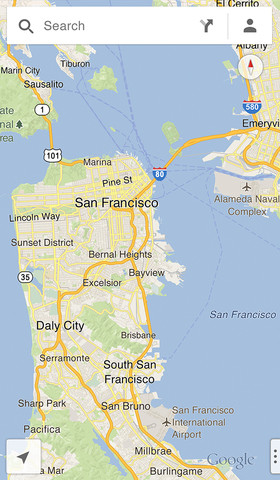Google Maps iOS App Finally Released For iPhone and iPad

iPhones get their sense of direction back with new Google Maps app
Google has finally released a native Google Maps iOS app, nearly three months after it was controversially replaced by the less than perfect Apple Maps as the default mapping provider for iPhones and iPads.
The app, which reportedly entered final testing last month, is currently available in the App Store in 40 countries and in 29 different languages, including Chinese, Dutch, English, French, German, Italian, Japanese and Spanish.
“People around the world have been asking for Google Maps on iPhone,” said Google in a blog post. “Starting today, we’re pleased to announce that Google Maps is here—rolling out across the world in the Apple App Store. It’s designed from the ground up to combine the comprehensiveness and accuracy of Google Maps with an interface that makes finding what you’re looking for faster and easier.”
Google Maps iOS app
 Google claims that the sharper looking vector-based map will load quicker and provide smooth tilting and rotating of 2D and 3D views. The search giant promises to turn mobile mapping into “one intuitive experience,” with information on more than 80 million businesses and points of interests.
Google claims that the sharper looking vector-based map will load quicker and provide smooth tilting and rotating of 2D and 3D views. The search giant promises to turn mobile mapping into “one intuitive experience,” with information on more than 80 million businesses and points of interests.
Included is voice-guided turn-by-turn navigation, a feature which wasn omitted in the previous iOS application because of disagreements between Apple, which developed the app, and Google, which provided the data. Users will have access to live traffic conditions to avoid incidents as well as information on more than one million public transport stops.
Google is also releasing a Google Maps SDK for iOS and a simple URL scheme to help developers use Google Maps while developing their own applications.
Google had been the default mapping provider to iOS since the platform’s launch in 2007, while Apple also developed the pre-installed YouTube application that was also removed in iOS 6. The added bonus for Google developing its own applications is that it can sell adverts around them, increasing its revenues.
Apple’s replacement, Apple Maps, was intended to free Apple from its dependence on Google, but was widely panned by users, who found numerous inaccuracies, including missing towns and businesses as well as the discovery of famous locations in bodies of water. Google is keen not to make similar mistakes and has introduced a novel way for users to report inaccuracies in its own maps.
“The world around us is constantly changing and, thanks to feedback from you, we make tens of thousands of daily updates to keep Google Maps accurate and comprehensive,” it said. “Here’s a helpful hint for the new app: if you see something off, simply shake your phone to send us feedback.”
How much do you know about the iPhone? Take our quiz!